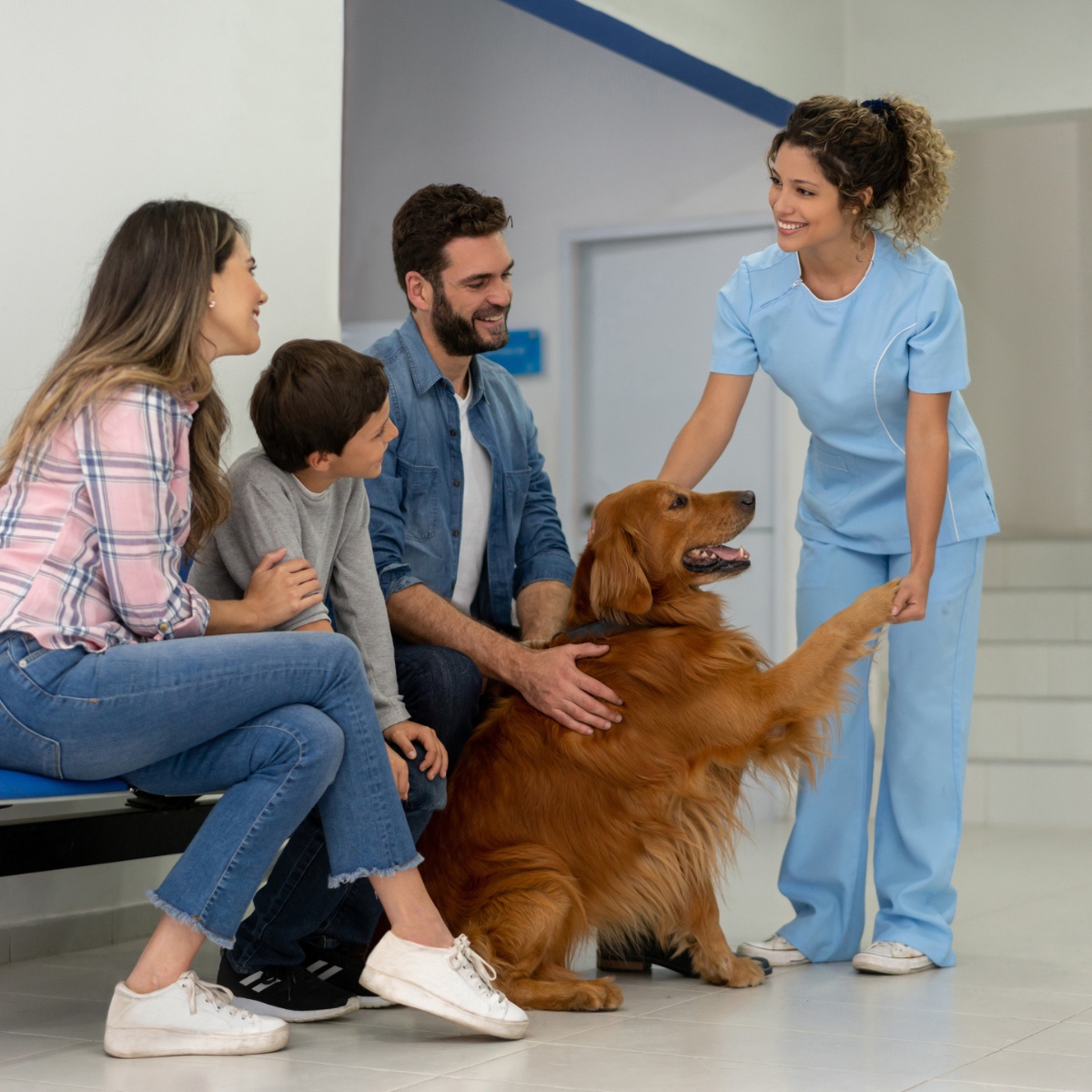


Select one of the options below:

The Spanish for the Veterinary Professional Graduate Certificate equips veterinarians with specialized Spanish communication skills to better serve Spanish-speaking pet owners. Gain the ability to discuss preventive care, diagnoses, and treatment plans while building trust through shared language. This program improves access to veterinary care for diverse communities.
With courses designed for veterinary settings, you will master Spanish language skills tailored to clinical settings. The program emphasizes clear communication, inclusive care, and rapport-building with pet owners.
Developed through collaboration between veterinary practitioners and language specialists, this curriculum is informed by research in the US, Mexico, and Colombia. You will benefit from a comprehensive language program designed to reflect real-world veterinary communication.
Over two years, complete four semester-length courses and a capstone course. The program offers graduate-level certification, enhancing your credentials and ability to engage Spanish-speaking communities.
Veterinarians with this certificate can expand their career in a variety of ways by bridging the language gap in their industry. Roles include:
Graduates of this certificate make veterinary care more accessible while strengthening community trust. Whether managing practices or working hands-on with animals, your enhanced language and cultural skills will open doors to rewarding opportunities.
Completing this certificate empowers you to put your passion for animals into action by improving accessibility to veterinary care in diverse communities. With enhanced language skills and cultural awareness, you will break down communication barriers and ensure Spanish-speaking pet owners receive the care their animals deserve, advancing equitable and inclusive veterinary practices.

Instructor and curricular designer of both Spanish and English as a Second/Foreign language, Shannon received M.A. degrees in both English and Spanish, Language, Literature, and Culture from Colorado State University. Shannon’s graduate work focused on curricular design in Spanish for Specific Purposes, specifically Spanish for Dairies. Since then, collaboration with Dr. Maura Velázquez-Castillo and Dr. Danielle Frey, has led to extensive Language Needs Analyses for both small and large animal health and care. These efforts, which have been funded in part by the U.S. Department of Education Undergraduate International Studies and Foreign Languages Grant (2017-2018), the USDA Veterinary Services Grant Program (2016-2019) and PetSmart Charities (2021-2027), have resulted in innovative field-specific Spanish language curricula, conference presentations and publications. Shannon is passionate about designing and teaching evidence-based Spanish language programs that address language gaps that exist between English and Spanish-speakers in the U.S.

Danielle Frey (she/her) is a veterinarian with a drive for community outreach and engagement. In her role at Colorado State University (CSU), she has developed multiple Doctor of Veterinary Medicine (DVM) student programs through collaboration with local communities and partnerships that focus on the human-animal interaction, community engagement and public health aspects of veterinary practice. While many of her programs focus on working in underserved communities, her principal program that works in underserved communities is located on the Baja Peninsula of Mexico. These opportunities explore cultural and regional variations in approaches to the human animal bond and medicine as well as bringing access to care to communities experiencing barriers. In the creation of these programs, she works with collaborators to address complex issues at the heart of the intersection of animal and human health and the barriers to veterinary care. A Colorado native, Danielle, graduated from CSU in 2004 with a degree in Biological Sciences, a minor in Spanish and received her Doctor of Veterinary Medicine from CSU in 2008. Prior to taking her role at CSU she worked in small and mixed animal practices as well as in shelter medicine. Her true passions lie in developing relationships and working with others to create programs increasing community access to veterinary care, helping create healthy communities through a one health approach and fostering opportunities for students to strengthen their skills and confidence.
"She has experience working both internationally and in student engagement, often concurrently. She has worked or volunteered in Latin America since 2006, with both animal and youth programs. She started leading students on international programming in 2009 and enjoys the opportunity that work brings to help her future colleagues see the breadth of the veterinary and human-animal experiences as they vary around the world. In partnership with an instructor from the CSU College of Languages, Literatures and Cultures, Danielle participated in the development of this curriculum of Spanish for Veterinarians language program, focusing on sharing her experience of engaging her veterinary clients in a second-learned language, Spanish.
| Fall semester | August 1 |
Start your application online and upload materials directly into the online system. You can save your progress and return any time.
Apply NowTo enroll in this program, you’ll need a standard undergraduate degree from a regionally accredited university. Additionally, students who enter the program must have a Spanish proficiency level of Novice High or above on the American Council on the Teaching of Foreign Languages (ACTFL) scale. At this level, speakers are able to respond to simple, direct questions or requests for information about common topics and basic personal information, and are able to express personal meaning in simple phrases using the present tense. This level is commonly achieved by taking two to three college-level language courses or the equivalent (e.g., exposure in the home/community, travel/study abroad, bilingual schooling, etc.).
Spanish proficiency level will be determined through an online language placement exam offered through the Department of Languages, Literatures and Cultures.
Here's how to take the test:
Important Note: Even if you choose to take individual courses without formally applying to the certificate program, you will still need to complete the Spanish proficiency test before starting your first course.
Two letters of recommendation and a personal statement that explains why you are interested in learning Spanish for your career.
Complete the online graduate application and pay the nonrefundable application processing fee (payable online). As soon as you have completed the required information, please submit your application. Your application will not be reviewed until it is complete and all required materials have been received.
Request one official transcript from the institution where you earned your bachelor's degree. Transcripts must be received directly from the originating institution to be considered official. Transcripts from Colorado State University are not required.
Electronic (preferred): Digital Transcripts must be submitted by the originating institution using a secure service such as parchment, eScrip-Safe, the National Student Clearinghouse, or e-Quals. Transcripts received via emails are considered unofficial. Use institution code 4075 for Colorado State University or gradadmissions@colostate.edu if the secure service requires an email address.
Mail (if necessary): Graduate Admissions Colorado State University – Office of Admissions 1062 Campus Delivery Fort Collins, CO 80523-1062
View your application status at any time to ensure your application checklist is complete or to check on updates.
Once your complete application, including supporting materials, is received, the department admission committee will review your application and notify you of their decision.
Proof of English language proficiency is required for applicants from countries or United States territories where there are official languages other than (or in addition to) English. This includes the U.S. territories of American Samoa, Guam, the Northern Mariana Islands, and Puerto Rico.